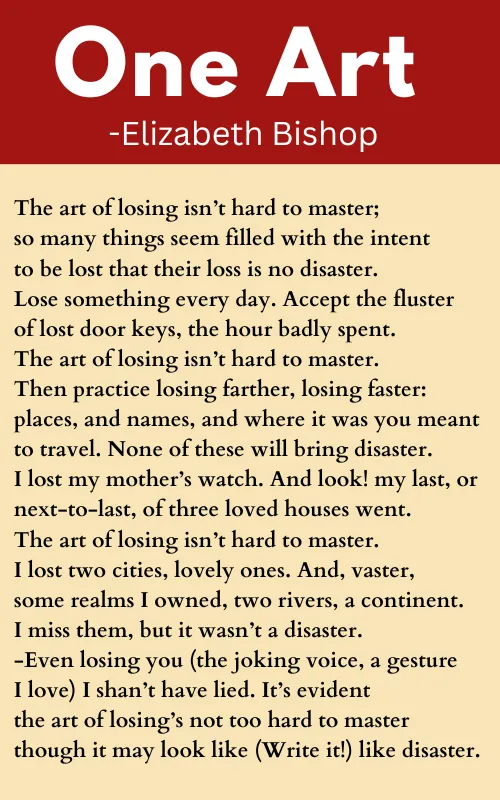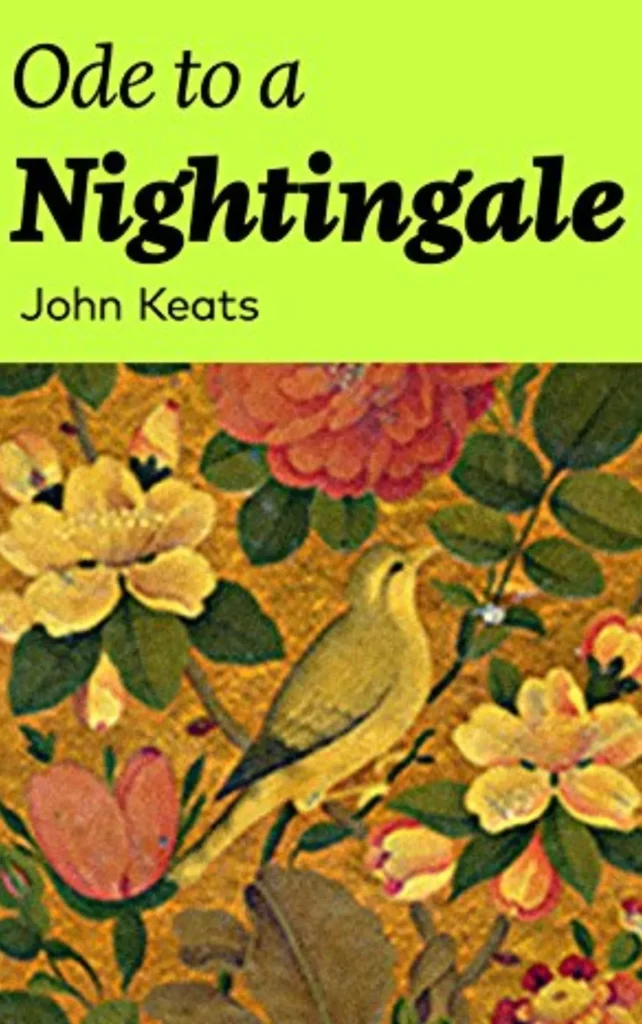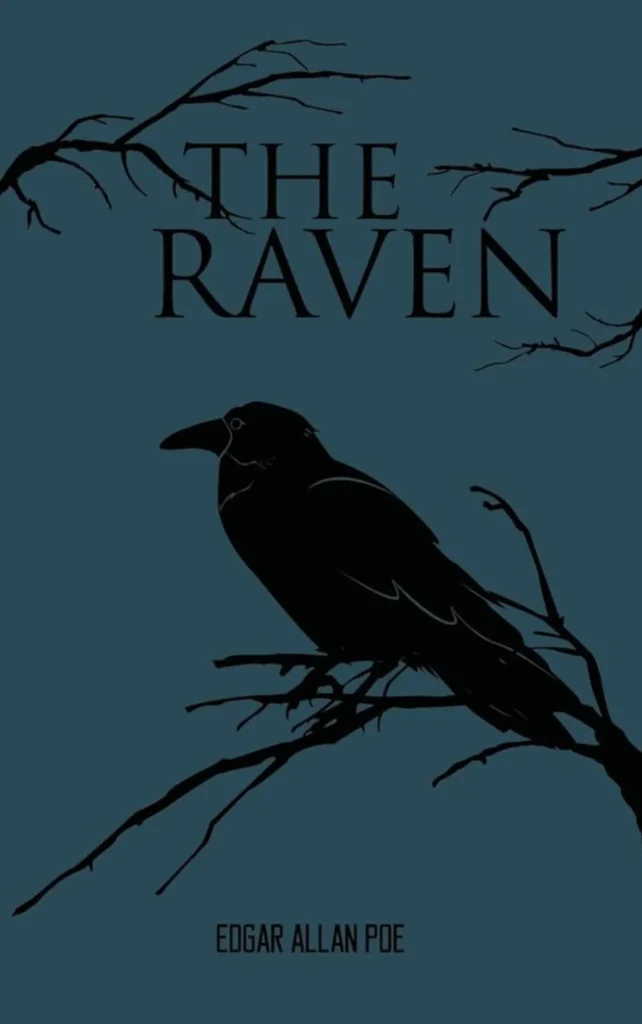About the Poem “One Art”
| Title | One Art |
| Author | Elizabeth Bishop |
| Publication year | 1956 |
| Genre | Villanelle |
| Meter | Trochaic tetrameter |
| Structure | Five tercets (three-line stanzas) followed by a quatrain (four-line stanza) |
| Rhyme scheme | ABAABA |
| Speaker | The speaker is a woman who has experienced many losses in her life. |
| Setting | The setting is unspecified, but it could be anywhere. |
| Imagery | Birds, keys, watches, and gloves. |
| Tone | Elegiac |
Themes of One Art
The themes of Elizabeth Bishop’s poem “One Art” are:
- Loss ➤ The poem talks about the idea that losing things is a common part of life.
- Acceptance ➤ It suggests that accepting and mastering the art of losing is important.
- Resilience ➤ The poem emphasizes the idea that we can learn to cope with even significant losses over time.
“One Art” Poem by Elizabeth Bishop
The art of losing isn’t hard to master;
so many things seem filled with the intent
to be lost that their loss is no disaster.
Lose something every day. Accept the fluster
of lost door keys, the hour badly spent.
The art of losing isn’t hard to master.
Then practice losing farther, losing faster:
places, and names, and where it was you meant
to travel. None of these will bring disaster.
I lost my mother’s watch. And look! my last, or
next-to-last, of three loved houses went.
The art of losing isn’t hard to master.
I lost two cities, lovely ones. And, vaster,
some realms I owned, two rivers, a continent.
I miss them, but it wasn’t a disaster.
-Even losing you (the joking voice, a gesture
I love) I shan’t have lied. It’s evident
the art of losing’s not too hard to master
though it may look like (Write it!) like disaster.
One Art Summary & Analysis
Elizabeth Bishop’s poem “One Art” is a meditation on the inevitability of loss and the speaker’s attempts to come to terms with it. The poem is written in the form of a villanelle, a strict poetic form with a limited number of lines and stanzas and a repeating rhyme scheme. This form gives the poem a sense of inevitability and repetition, which mirrors the speaker’s own experiences with loss.
The poem begins with the speaker asserting that the “art of losing isn’t hard to master.” She goes on to list a variety of things that she has lost, from small objects like keys and hours to larger things like houses and cities. She even mentions losing “two realms, two rivers, a continent.”
Despite the magnitude of her losses, the speaker insists that they have not been “disasters.” She acknowledges that they have caused her pain, but she also suggests that they have made her stronger and more resilient. She has learned to accept loss as a natural part of life, and she has even found a kind of beauty in it.
The speaker’s acceptance of loss is not without its challenges, however. In the third stanza, she admits that “the art of losing isn’t hard to master. Except / the art of losing everything.” This line suggests that there is a certain kind of loss that is simply too much to bear.
Despite this, the speaker remains hopeful. In the final stanza, she returns to the image of losing keys and hours. She suggests that even the smallest losses can teach us something about ourselves and the world around us. She also suggests that even the most painful losses can eventually be healed.
FAQs from One Art
What is the main idea of the One Art?
The main idea of the poem “One Art” is that loss is a natural part of life, and we can learn to cope with it and even find beauty in it.
What is the plot of One Art?
One Art is a poem about learning to accept loss as a natural part of life.
What is the tone of One Art?
The tone of “One Art” by Elizabeth Bishop is mostly calm and controlled, but it becomes sad and resigned towards the end.
What kind of poem is One Art?
One Art is a villanelle, a type of poem with a strict form and rhyme scheme.
What is symbolism in One Art poem?
The symbolism in poem is the use of everyday objects to represent the larger losses that we all experience in life.
What is the conclusion of One Art?
The conclusion of the poem is that mastering the art of losing is hard when it comes to losing someone loved.










![The Catcher In The Rye Summary, Themes & Characters [by J. D. Salinger] The Catcher In The Rye Summary, Themes & Characters [by J. D. Salinger]](https://atozsummary.com/wp-content/uploads/2023/06/The-Catcher-In-The-Rye-Summary-Themes-Characters-by-J.-D.-Salinger.webp)
